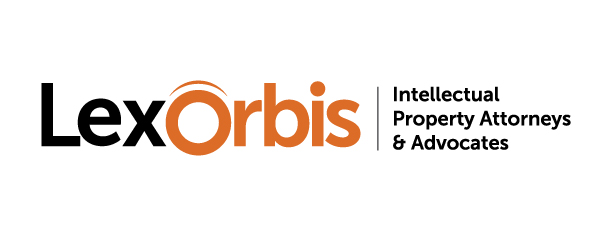Comparison with Japan and Taiwan
Non-fungible tokens (NFT) have attracted a lot of hype globally in recent years. Their popularity and appreciation is growing exponentially in India as well, as are the legal challenges associated with them. In this article, the authors shed light on some of these challenges.

Founding partner
LexOrbis, New Delhi
Tel.: +91 98 1116 1518
Email: [email protected]
From their basics, NFTs are blockchain-based tokens with a unique ID tied to an underlying asset, which cannot be replicated or tampered with. Most of the works traded as NFTs are photographs, works of art, video clips and the like.
Widespread copyright infringement of such works takes place in the NFT space at two levels – by the NFT creator or seller who engages in unauthorized imprinting or publication, and by the purchaser who undertakes unauthorized reproduction and distribution of NFTs.
A good idea of the extent of this problem can be gleaned from a statement released earlier this year by the largest NFT marketplace, OpenSea, about withdrawing a free listing tool on the platform because “more than 80% of items created with this tool were plagiarized works, fake compilations and spam”.
However, the feature was rolled back because the NFT creators or platform users were not completely satisfied with this change. Therefore, counterfeit NFT collections continue to flood the market.
OUTSIDE EXISTING LAW
Although this is a new form of infringement, India’s existing copyright law provides enough coverage. Under Section 14 of the Indian Copyright Act (1956), the copyright owner of an original work owns a number of rights, including the right to make reproductions and adaptations.
Embossing or publishing a copyrighted work through an NFT and making it open for purchase involves making a copy of the work and communicating it to the buyer or potential buyers. Without a license or authorization from the copyright owner, this constitutes unauthorized reproduction and distribution, and thus copyright infringement according to Section 51 of the Copyright Act.
When it comes to violations by NFT buyers, it would not be wrong to say that many cases are cases of innocent violations. People generally work with the understanding that when an NFT is purchased, they also own the underlying asset or IP address, which is not true.
When purchasing NFT, the buyer does not automatically acquire the rights to the underlying IP address unless this is assigned by written agreement. When NFT buyers begin to reproduce the underlying video clip or artwork, make copies and use it commercially, they fail to understand that they are only acquiring a metadata file that is a signed copy or receipt of the work, not the IP.
COURT PENDING

Associate partner
LexOrbis in New Delhi
Email: [email protected]
Due to the peculiar nature of violations that take place in this area, it is important to see how the courts view the case and apply existing laws to this new phenomenon.
No NFT-related copyright or trademark infringement has yet been decided by courts in India, but cases filed in other jurisdictions can be a good source of guiding visions. The first thing that comes to mind is the Hermès dispute in the US. Earlier this year, French luxury design house Hermès sued a Los Angeles-based artist, Mason Rothschild, alleging that he created NFTs called “metabirkins” that closely resemble Hermès’ iconic “Birkin” bag. Hermès complained that this was the same as counterfeiting in the offline world, and the artist made thousands of US dollars selling the NFT, just as he would have made selling a counterfeit physical bag.
The court’s decision is awaited, and once handed down, it will likely have major implications for how the world views infringement in the metaverse.
There has also been a landmark development in Asia, with a Chinese court ruling for the first time in an NFT-related copyright infringement lawsuit. Shenzhen Qice Diechu Cultural Creativity, the copyright owner of the “fat tiger” illustration series, sued Hangzhou Yuanyuzhou Technology, operators of an NFT digital art trading marketplace called Bigverse, alleging that a user on their platform created and sold an NFT of digital work identical to the copyrighted work in question.
The plaintiff alleged that the NFT platform was guilty of contributory copyright infringement. The court found in the plaintiff’s favor and ordered the platform to make the NFT unavailable or non-transferable, as well as pay damages.
In India too, there is a provision for liability for contributory infringement under the Copyright Act. But section 79 of the Information Technology Act (2000) exempts intermediaries from all responsibility for the actions of users. NFT platforms will probably also successfully claim status as an intermediary and thus a safe haven.
On digital NFT marketplaces, traders can buy and sell NFT tokens through the use of cryptocurrencies. They are therefore online platforms that act as conduits between buyers and sellers of NFT assets.
DUE DILIGENCE
But to take protection under Section 79, the intermediaries are required to discharge a certain due diligence burden. They must exercise reasonable care and take immediate action if they become aware that their platform is being exploited to facilitate illegal activity.
If they do not implement or follow the measures listed under the Information Technology (Intermediary Guidelines and Digital Media Ethics Guidelines) (2021) rules, they may be liable for the action of the user as a contributor or facilitator.
E-commerce platforms like Amazon and flipkart, and entertainment platforms like YouTube all use such measures, so should the NFT platforms. Due to their blockchain nature, NFT platforms can face some unique issues. But their core responsibility and liability in cases of due diligence deficit should be the same.
It is relevant to note that, unlike an online platform that only hosts content, NFT platforms offer the technology to create an NFT and they automatically prepare smart contracts for sale. Therefore, their role with respect to the content is not passive. Like e-commerce platforms, it is crucial to hold them accountable if they do not remove offending collections when they are aware of them.
Well-established digital platforms have account verification systems and offer some kind of automated system to identify, remove and prevent “copymints” (duplication of authentic NFT content). OpenSea, for example, provides such a system. Our website says: “Our new copymint prevention system leverages computer vision technology to scan all NFTs on OpenSea (including new coins). The system then matches these scans against a set of authentic collections, starting with some of the most copied collections – we looks for twists, rotations and other permutations. We will expand this set over the coming months and continuously train our models to improve detection.”
The platform further mentions: “Our user security team actively monitors the platform and removes fraudulent content as soon as it is detected or reported by users.”
All NFT platforms should be made to take such measures to comply with the due diligence provisions of the Intermediary Rules or they should be made liable for contributory infringement
TRADEMARK PROTECTION?
In particular with regard to trademarks, another question arises as to whether registrations in Class 9 of the Nice Classification should be a prerequisite for protecting trademarks in the NFT area.
For example, if a footwear brand has registration in class 25 for its mark, can it bring an infringement case against an NFT coin that creates images of the same appearance of the same mark? If not, does that mean all the businesses or brands are expected to obtain registration for their marks in Class 9 if they want to protect their brand in the metaverse?
Assuming they get class 9 registrations for their marks, how would they maintain them after five years if they can’t show actual use of the marks for virtual goods in the metaverse? Ideally, registrations should not be considered compulsory in class 9, and here the relevance factor across classes should come into play. However, it remains to be seen how the courts view this.
If copyrighted content is licensed to a licensee by the copyright owner for any digital use, it is important to expressly cover in the contract whether such license includes a right to NFT performance or not, so that licensees do not abuse vague or broad language or clauses in Agreement.
RESPONSIBILITY IS THE KEY
The above examples raise only a handful of current issues or questions, with many new issues likely to emerge as NFTs gain more popularity.
While making people aware of the acts that constitute infringement can go a long way, at least to minimize innocent infringements, it seems that making the NFT platforms liable on par with other intermediaries such as YouTube and Amazon will finally provide a real solution to NFT counterfeiting because it would be virtually impossible for copyright owners to track down individual infringers and go after each of them.

LexOrbis
709-710 Tolstoy House
Tolstoy Road 15-17
New Delhi – 110001, India
Tel: +91 11 2371 6565
Email: [email protected]
www.lexorbis.com


